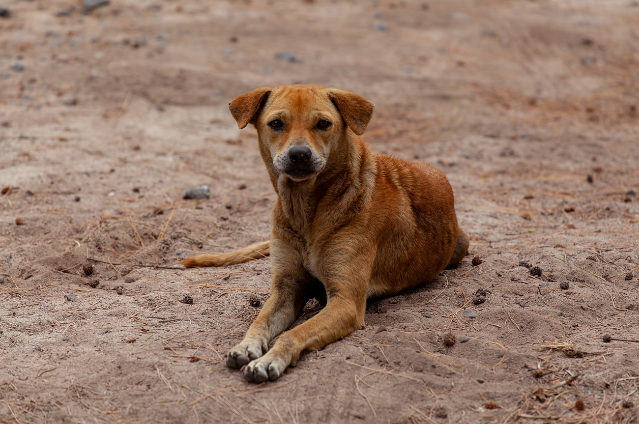
“Children must feel safe on their bikes, and the elderly must be able to walk without fear.” Those were the words the Supreme Court meant to convey when it announced that all stray dogs in Delhi-NCR that had not been sterilized must be captured and shifted to shelters within eight weeks. The mass removal, initially aimed at tackling rabies and dog attacks, is now exchanging one crisis for another, as public safety and animal welfare interests collide.
A Landmark Court Order
Delhi is estimated to have around 1 million stray dogs, while only 800,000–900,000 dogs are registered nationwide. Many remain homeless. The city, grappling with rising dog bites and rabies cases, recorded 35,198 dog bites and 49 rabies cases in just the first half of 2025.
On 11 August 2025, the Supreme Court of India issued one of the most far-reaching directives in decades on animal control in urban centres: Delhi-NCR must pick up all stray dogs — sterilized or unsterilized — in eight weeks and place them in government-built shelters.
The bench, headed by Justices JB Pardiwala and R. Mahadevan, cast it as a public safety emergency. “Children should not be afraid to ride their bicycles, and the older generation should be able to walk freely,” they emphasized, adding that attacks, bites, and rabies have become unacceptable threats to the capital region’s population.
The order demands:
- Immediate creation of adequate shelter facilities
- Deployment of helplines and CCTV monitoring
- Penal action against anyone obstructing the relocation process
The decision has sharply divided public opinion, pitting community safety advocates against animal welfare defenders.
Legal Leap or Regulatory Overreach?
The Court justified its stance as necessary to guarantee public safety amid rising rabies cases and uncontrolled stray populations. However, critics argue the decision is a hardline shortcut.
To the judiciary, the priority is clear: public safety over the slow pace of sterilization programs. Justices Pardiwala and Mahadevan:
- Pointed to the sustained failure of municipal bodies to control numbers
- Warned of rising aggression among unmonitored street dogs
- Argued that existing laws have failed to address the immediate threat to vulnerable populations
The decision is a long-awaited relief to many Residents Welfare Associations (RWAs). Atul Goyal of URJA said, “It will be of great help in reducing the issue; years of complaints about recurring instances of dog attacks have fallen on deaf ears.”
But PETA India rejected the move as “impractical, illogical, and illegal,” arguing that building enough shelters is both uneconomic and inhumane. Former Union minister Maneka Gandhi echoed these concerns, warning it could destabilize the ecological balance.
A Cost That Bites
According to municipal officials, the plan may require up to ₹15,000 crore, straining budgets with the tight eight-week deadline. The government’s lack of a concrete blueprint fuels concerns that the operation is hasty and underprepared.
The Backlash: Animal Rights and Concerns
Animal rights groups and activists have condemned the order as “impractical, illogical, and illegal.”
Key criticisms:
- Shelter capacity – Delhi lacks facilities to house even a fraction of its 1 million stray dogs
- Economic strain – Implementation costs are pegged at ₹15,000 crore
- Health hazards – Overcrowded shelters could become breeding grounds for disease, including zoonotic infections
- Ecological imbalance – Removing community dogs could trigger the “vacuum effect,” where more aggressive strays move in
Maneka Gandhi described the ruling as “a strange judgment given in haste” and warned it would cause “irreparable loss to the biodiversity of our cities.”
Political and Celebrity Reactions
The order sparked political tremors:
- Rahul Gandhi said, “These voiceless souls are not ‘problems’ to be erased,” advocating humane solutions like sterilization, vaccination, and adoption drives.
- Celebrities including Janhvi Kapoor, Varun Dhawan, and Vir Das labelled the order a “death warrant,” calling for compassion over mass removal.
- Veterinary and public health experts have warned that hasty depopulation could:
- Trigger territorial conflicts as new stray packs migrate in
- Increase aggression among displaced dogs
- Overwhelm veterinary systems with disease outbreaks in crowded shelters
Many experts insist that the ABC (Animal Birth Control) program remains the most sustainable approach — but it must be properly funded, monitored, and scaled up.
The Road Ahead
Some editorials have called the decision arbitrary and unconstitutional, overturning decades of legal precedent and ignoring the role of community dogs in urban ecosystems. Others see it as a necessary push to break municipal inertia.
To resolve Delhi’s stray dog crisis without creating new health risks, experts recommend:
- Continuing sterilization and vaccination measures
- Involving citizens and RWAs in humane feeding and monitoring
- Adopting long-term urban planning that balances human safety and animal welfare
This is not a simple choice between safety and compassion. The challenge is to design a system that safeguards both
